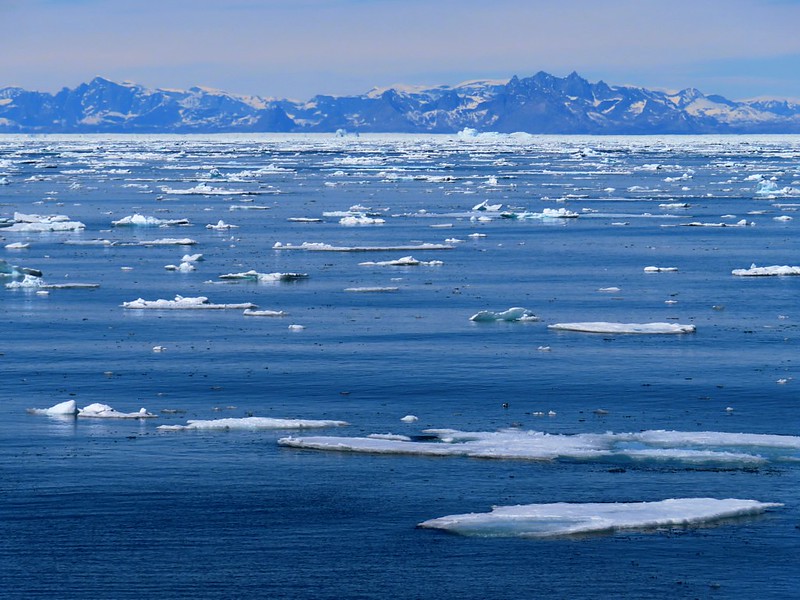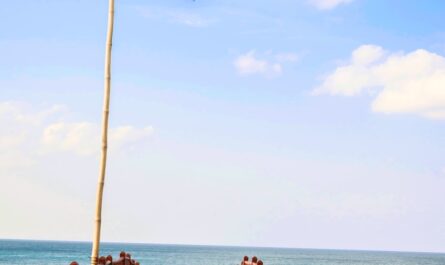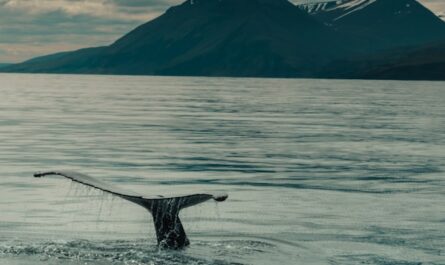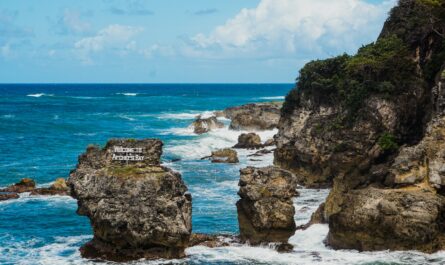Iceland, often called the “Land of Fire and Ice,” is known for its breathtaking landscapes of glaciers, volcanoes, and hot springs. But beyond its terrestrial beauty, Iceland also boasts a rich marine ecosystem that captivates scientists, locals, and travelers alike. Iceland’s surrounding waters are home to a remarkable diversity of marine life, including iconic species like puffins, whales, and a variety of fish, seabirds, and invertebrates that make up this unique Arctic and sub-Arctic ecosystem.
Iceland’s location at the convergence of cold Arctic and warmer North Atlantic waters creates ideal conditions for a rich marine ecosystem. This article will delve into the fascinating marine species found around Iceland, exploring their unique adaptations, ecological roles, and the conservation efforts underway to protect these invaluable Arctic waters.
Puffins: The Adorable “Clowns of the Sea”
Puffins are among Iceland’s most beloved and iconic seabirds, easily recognized by their colorful, parrot-like beaks, black and white feathers, and endearing waddling gait. The Atlantic puffin (Fratercula arctica), known locally as “lundi,” is the most common puffin species in Iceland. Nearly 60% of the world’s Atlantic puffin population breeds in Iceland, making it a vital breeding ground for these charming seabirds.
Puffin Behavior and Habitat
Puffins are seabirds well adapted to life in the water and on land. During the breeding season, from May to August, puffins gather in large colonies along Iceland’s coastal cliffs, particularly in areas like Látrabjarg, Vestmannaeyjar (the Westman Islands), and Dyrhólaey. These cliffs provide safe nesting grounds, where puffins dig burrows to lay their eggs.
Puffins are also excellent swimmers and divers, using their wings to “fly” underwater in search of small fish, which they catch and store in their beaks thanks to a unique mechanism that allows them to hold multiple fish at once. They primarily feed on sand eels, capelin, and herring, diving to depths of around 60 meters to catch prey.
The Puffin Life Cycle and Threats
The puffin’s lifecycle is fascinating. After spending the summer months breeding and raising their chicks (known as pufflings), the adults return to the open ocean, where they live for the remainder of the year. Puffins spend most of their lives at sea, returning to land only to breed, and they are well adapted to the cold waters of the North Atlantic.
However, puffins face threats due to climate change and overfishing. Rising sea temperatures affect the availability of their main food sources, and overfishing has further reduced fish stocks. Conservation efforts in Iceland focus on sustainable fishing practices and protecting puffin nesting sites, though more work is needed to ensure these endearing birds have a safe future.
Whales: Giants of the Icelandic Waters
The waters around Iceland are renowned as some of the best in the world for whale watching. The cold, nutrient-rich currents of the North Atlantic make this an ideal feeding ground for a variety of whale species, from the massive blue whale to the playful humpback. Whale watching has become a popular attraction in Iceland, with tours departing from towns like Húsavík, Reykjavík, and Akureyri offering the chance to see these majestic creatures up close.
Common Whale Species in Iceland
- Humpback Whale (Megaptera novaeangliae): Known for their acrobatics and distinctive “songs,” humpback whales are frequent visitors to Iceland’s waters. These whales migrate to warmer waters to breed but return to the North Atlantic in summer to feed on fish and krill. They are often spotted breaching and slapping their tails, making them a favorite among whale watchers.
- Minke Whale (Balaenoptera acutorostrata): The smaller minke whale is the most common whale species in Icelandic waters. Unlike other baleen whales, minke whales are solitary creatures and are often seen alone or in pairs. They feed on fish and small crustaceans, and their smaller size allows them to approach shorelines, making them easy to spot.
- Blue Whale (Balaenoptera musculus): The blue whale, the largest animal on Earth, occasionally visits Iceland’s waters. Growing up to 30 meters in length, blue whales feed on vast quantities of krill to sustain their enormous bodies. While they are rare, spotting a blue whale is an unforgettable experience for any wildlife enthusiast.
- Orca or Killer Whale (Orcinus orca): Orcas are apex predators and are found in Icelandic waters year-round, feeding on fish, seals, and even other marine mammals. Known for their intelligence and complex social behaviors, orcas are frequently seen in the Snæfellsnes Peninsula and around the Westfjords.
- Fin Whale (Balaenoptera physalus): The fin whale, the second-largest whale species, is also a seasonal visitor to Iceland’s waters. These whales are known for their speed and can reach up to 40 kilometers per hour. Fin whales are particularly abundant near the Icelandic coast during summer months when they feed on krill and small fish.
Conservation of Whales in Iceland
Iceland’s whale populations face a mix of challenges and protections. Despite a global moratorium on commercial whaling, Iceland has continued limited whaling operations, primarily targeting minke and fin whales. This has generated controversy, as many Icelanders believe whale watching is more profitable and sustainable than whaling.
Conservationists and ecotourism operators work together to advocate for whale protection, emphasizing the economic benefits of whale tourism. Public support for whaling has also declined, and ongoing education about the importance of whales to marine ecosystems is critical to protecting these species for future generations.
Iceland’s Rich and Diverse Arctic Ecosystem
Iceland’s marine life extends far beyond puffins and whales. The Atlantic waters around Iceland are rich in biodiversity, supporting a complex Arctic ecosystem that includes numerous fish species, seabirds, invertebrates, and marine plants.
Fish Species in Icelandic Waters
Iceland’s waters are a fishing paradise, both commercially and ecologically. Fish like cod, haddock, herring, and capelin are abundant, supporting not only the marine ecosystem but also Iceland’s fishing industry, which is a crucial part of its economy. These fish play essential roles in the food chain, feeding larger marine animals like whales, seabirds, and seals.
- Atlantic Cod: Cod is the most commercially important fish in Iceland and a cornerstone of its fishing industry. Icelandic cod is particularly valued for its quality and taste, and sustainable fishing practices have been introduced to prevent overfishing and protect the species.
- Herring: Atlantic herring are small, schooling fish that serve as an important food source for larger predators. Herring populations fluctuate based on ocean temperature and food availability, and Iceland actively manages herring stocks to prevent overfishing.
- Capelin: Capelin is a small, cold-water fish that plays a vital role in the marine food chain. The spawning season of capelin attracts larger fish, seabirds, and marine mammals, making it a keystone species in Iceland’s waters.
Seabirds Beyond Puffins
While puffins are Iceland’s most famous seabirds, several other species thrive along Iceland’s coasts, contributing to the region’s vibrant avian biodiversity.
- Northern Fulmar: These seabirds resemble gulls but are members of the petrel family. Fulmars are adept fliers and can often be seen gliding over the ocean near Iceland’s cliffs. They feed on fish, squid, and crustaceans and are well adapted to the cold, windy conditions of the North Atlantic.
- Arctic Tern: Known for its incredible migration, the Arctic tern travels from the Arctic to the Antarctic each year, covering tens of thousands of kilometers. Iceland is a significant breeding ground for Arctic terns, where they nest in colonies along the coast.
- Razorbill and Guillemot: These black and white seabirds are commonly found nesting along Iceland’s rugged cliffs. Razorbills and guillemots are excellent divers, capturing fish in their powerful beaks and feeding their young in cliffside colonies.
Conservation Efforts in Iceland’s Marine Ecosystem
The Arctic ecosystem around Iceland faces threats from climate change, overfishing, and increased tourism. Rising sea temperatures and melting ice caps alter fish distributions, affecting food availability for seabirds and marine mammals. Conservation organizations and government agencies work to address these issues through policies and public awareness campaigns.
- Marine Protected Areas (MPAs): Iceland has established MPAs to protect critical habitats for marine life. These areas limit fishing, prevent habitat destruction, and protect vulnerable species, such as coral reefs, which provide breeding grounds for various fish.
- Sustainable Fishing Practices: Iceland has one of the world’s most regulated and sustainable fishing industries, setting strict quotas to prevent overfishing. This approach has been instrumental in preserving fish stocks and supporting the health of the broader marine ecosystem.
- Whale and Seabird Conservation Programs: Iceland has several organizations dedicated to the study and conservation of whales and seabirds. These programs monitor populations, conduct research on threats like climate change and pollution, and promote sustainable tourism practices.
Conclusion: Iceland’s Marine Ecosystem – A Unique Natural Treasure
The marine life of Iceland is a testament to the resilience and diversity of Arctic ecosystems. Puffins, whales, fish, and other marine species thrive in this challenging environment, creating a delicate balance that supports Iceland’s economy, culture, and natural beauty. Iceland’s commitment to sustainable fishing, marine conservation, and ecotourism is crucial to preserving this unique ecosystem for generations to come.
As travelers and conservationists continue to explore and appreciate Iceland’s marine life, raising awareness and advocating for conservation will be essential to ensuring that Iceland’s vibrant marine ecosystems remain a treasure of the North Atlantic. Through continued research, protection efforts, and responsible tourism, Iceland’s marine life will continue to thrive, offering both inspiration and a reminder of the importance of protecting our planet’s fragile oceans.



